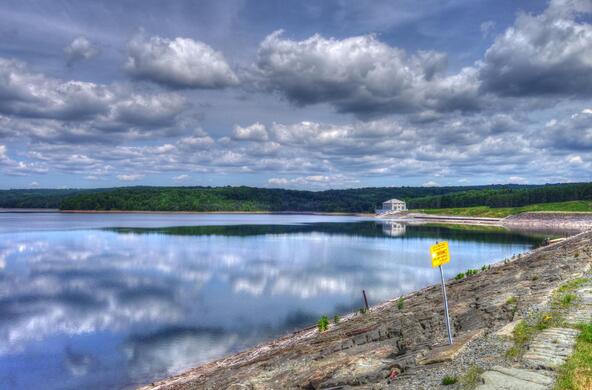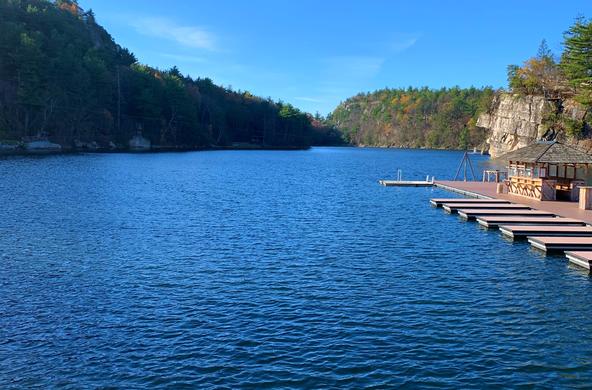Distant relatives of shrimp, zooplankton are an important food resource for aquatic animals. These free-floating crustaceans are considered one of the foundations of lake food webs, along with their plant counterparts, phytoplankton.
While zooplankton are easy to overlook — to get up close and personal with them you need a microscope — they are vital to the survival of larger animals in lakes, such as fish.
Scientists have long been interested in zooplankton diets. It's known they feed on organic material, but where does it come from? The assumption has been that they eat tiny aquatic plants. But Cary Institute limnologist Jon Cole and colleagues suspected that plant material from the watershed might also play a role.
This month, in a paper published in the Proceedings of the National Academy of Sciences, Cole and colleagues report nearly a third of zooplankton diets are supported by material derived from maple leaves, pine needles and other organic material that flows into lakes from the surrounding landscape.
The study brings scientists one step closer to clarifying the role that watershed inputs play in aquatic food webs.
Organic matter from land is carried to lakes in surface run-off and ground water. But it has been difficult to quantify how this material contributes to the aquatic food web, largely because the players involved are so small. While you can dissect a fish and analyze its stomach contents, it's not easy to identify the gut contents of a microscopic zooplankton.
We've all heard the adage, "you are what you eat." By analyzing stable isotopes in zooplankton biomass — and determining where the organic material in their tissue originated from — the research team was able to reveal that while algae are a favored food source, the zooplankton also eat organic material washed in from the watershed.
Cole and his colleagues relied on biogeochemical techniques to trace the diets of several zooplankton species commonly found in freshwater lakes: Daphnia, Holopedium and Leptodiaptomus. Samples were taken from different types of lakes — one was small with moderate nutrient levels, while the other was large and nutrient-poor.
In both lakes, land-generated material made up a third of zooplankton biomass. When edible algae were scarce, zooplankton derived a higher percentage of their diet from things such as maple leaves.
While ascertaining where microscopic animals get their food resources might seem esoteric, recognizing the connection between lakes and their watersheds is essential to managing healthy ecosystems and protecting fish populations. Like the microbes that enrich our soil, small-scale phenomena can have big-picture effects.
The study challenges older views of lakes as closed ecosystems and adds to the growing body of evidence that lake ecosystems are intimately tied to their watersheds. It is the most recent of several Cary Institute-led studies investigating watershed inputs to aquatic food webs; all of them have resulted in findings indicating zooplankton feed on land-generated organic matter.
While the lakes used in the study were part of the University of Notre Dame's Ecological Research Center in Wisconsin, it is expected that similar terrestrial subsidies are happening at water bodies in the Hudson Valley, including the Hudson River, which has very large terrestrial inputs. So the next time you catch a bass, thank a maple leaf.
Lori M. Quillen is director of communication at the Cary Institute of Ecosystem Studies in Millbrook.





